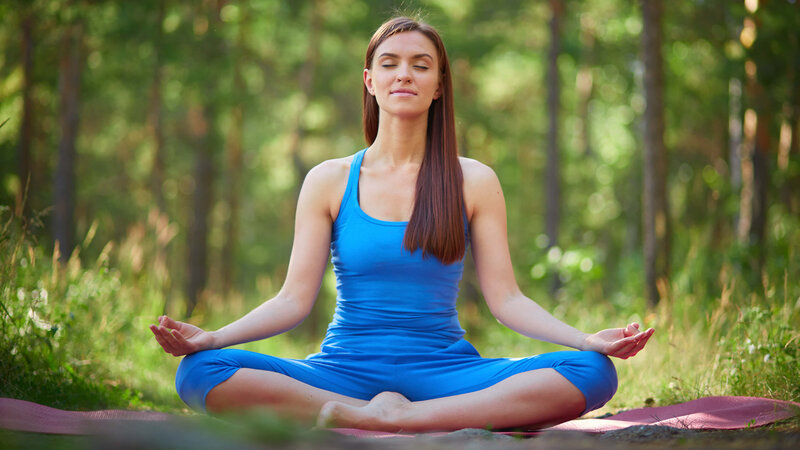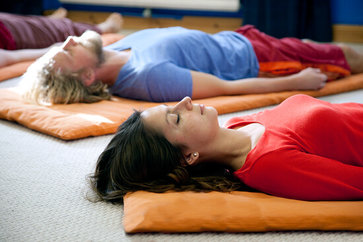The History & Origin Of Hatha Yoga
The word yoga came from the Sanskrit language which means, to unite or join, or just union. The Sanskrit word yoga has many translations and can be explained in many ways.
It comes from the root “yug” that initially meant “to tie up” ie. Like joining of horses to a vehicle carriage. In other words “to be positive and active”.
There are other meanings is joined, yoke, concentrate or unite. Fundamentally yoga means combining characterize with a method of discipline. A male who performance this discipline is called a yogi or yogin; a female practician a yogini.
Yoga embarked on in India in late 3300 to 1700 BC, at the Indus Valley Civilization scientific have discovered several seals, that show drawings and symbols of yoga and its meditative-like posture.
This great deal of verification support that these pictures illustrate a form of ritual discipline, which indicates a sign of yoga. The archaeologist Gregory Possehl has also pointed that there was sixteen other “yogi glyptics” according to images found by him at Indus Valley Civilization.
The Four Historical Event Of Yoga.
- History of yoga Vedic period.
- Pre-classical yoga history.
- The classical period yoga history.
- The post-classical period yoga history.
- The History of modern yoga.
History Of Yoga Vedic Period
The prehistoric texts of Vedas are the oldest scriptures throughout the world. The Sanskrit word Veda means “knowledge” and rig means “praise.” Thus, the Rig Vedas are a collection of introits that are in praise of a higher power.
The other three Vedas are Sama Veda which means “Knowledge of chants”, Atharvana Veda refer as “knowledge of Atharvana” and Yajur Veda generally known as “knowledge of sacrifice”.Vedic Yoga can as well be called antiquated Yoga, as people believed in a ritualistic way of life.
Traditions, sacrifices, and rituals existed since they were considered a means of connecting with the spirit world. People diverted to rishis or Vedic yogis for illumination. Vedic gurus were blessed by a vision of the supreme reality, and their songs of praise speak of their amazing gut feelings.
The Classical Period Yoga History
This involves an expansive era of approximately 2,000 years up to the time of the second century. Gnostic books called the Upanishads, which spoke in specify about the self and fundamental realism appeared. There are more or less 200 Upanishads.
One of the most notable yoga scriptures is the Bhagavad-Gita, which was composed approximately 500 B.C.The central instruction of the Gita is, to do ones’ duty and not anticipate the fruit of the action.
In 1200 BC, the great teacher Rishaba, who was a supporter of the tradition of Jainism, also pointed up efforts devoted to the liberation from the spirit.
It was through this time, that Yoga established its way into Buddhism too; Lord Buddha was the first Buddhist to study Yoga. Buddhist scriptures lay stress on meditation and concrete postures, which are yogic practices.
The Classical Period Yoga History
In the second-century C.E, Patanjali composed the yoga sutras, which contains 195 signs. They explain the Raja yoga or the eight-fold paths that are meant to be remembered as it is not in a written form.
The earliest known Sanskrit narration on the sutras is Yoga- Bhashya (speech on Yoga), by Vyasa in the fifth century. Patanjali believed that everyone is imperturbable of matter (Prakriti) and spirit (Purusha).
He recommended that yoga would rebuild the spirit to its complete reality, guidance that saw a shift from non-dualism to dualism. This era in yoga looks after the teachings of Vedanta, that there is the greatest unity in everything in the universe.
Vedanta is a thoughtful system based on the teachings of the Upanishads. The earlier centuries saw yogis laying attention only on meditation and contemplation. Their ambition was to shed their mortal coils and unite into the infinite.
However, for the time during this period, yogis started to probe the hidden powers over the body. Yoga masters designed higher yogic practices that would refresh the body and perpetuate its life. This led to the birth of Hatha Yoga that is practiced throughout the world now as days.
The Post-Classical Period Yoga History
After a few centuries after the scholars of “Patanjali” created a technique of yoga practices designed to revitalize the body and prolong life.
They dismiss the teachings of yoga described in the ancient Vedas and adopt the physical body as the means to achieve wisdom. They developed Tantra Yoga, with revolutionary techniques to cleanse the mind and body to break the knots that bind us to our physical existence.
The creation of these physical-spiritual connections placing the body at the counterpoint led to the creation of “Hatha Yoga”.
What is Hatha Yoga?
The yoga of positions or asanas is called Hatha Yoga. It extensively comprises asanas (body postures), pranayama (body manners) relaxation, and purifying techniques.
The foremost goal of Hatha yoga is to promote concentration and meditation, which is practically a preparation for accomplishing the final stage of yoga, called “Samadhi”.
Along with Hatha yoga, Tantra yoga, in addition, developed during this period. Tantra yoga is the course of traditions and mantras or mysterious syllables.
The History Of Modern Yoga
In the 18th century and early 1900s, people came to recognized yoga, when a teacher named Swami Vivekananda travel to the West.
It was in the year 1893 when the Parliament of Religions was held in Chicago; Swami Vivekananda wowed the audience with his lectures on yoga and the universality of the world’s religions.
Lately in the 1920s – 1930s “Hatha Yoga” encouraged strongly in India with the work of Swami Sivananda, T. Krishnamacharya, and other yogis who were practicing Hatha Yoga.
Later T. Krishnamacharya opened the first school of Hatha Yoga in Mysore in 1924 and then in 1936 Sivananda founded the Divine Life Society on the banks of the holy river the Ganges.
After some years T. Krishnamacharya produced three students name B.K.S. Iyengar, T.K.V. Desikachar, and Pattabhi Jois continue their legacy and increase the popularity of Hatha Yoga.
Sivananda was a creative author who wrote more than 200 books on Hatha yoga and later established nine ashrams and countless yoga centers throughout the world.
Then after the importation of yoga to the West still continues to a trickle until Indra Devi opened her yoga studio in Hollywood in 1947. After that many more Western and Indian teachers have become pioneers, popularizing Hatha yoga and earn millions of followers.
Nowadays there are many schools on Hatha Yoga that teaches different styles, all focusing on different aspects of the practice now. If you follow the basic yoga rules in your life you may acquire several benefits. Yoga can change your body sections by making it a flexible, thin, and stable body.
Breathing techniques can purify the blood and clear the problems such as nasal passages and sinuses. The great advantages are it relief Stress relief that is necessary for a healthy life.


























JK stated long ago, that his viewpoint is that the modern form of yoga only began a few centuries ago. He refers to this as simply exercise; that the real yoga is Raja yoga. He is a considerable source of wisdom and knowledge, yet this extreme viewpoint does not jibe with your history, as presented here, nor the method I personally use which is Kripalu.